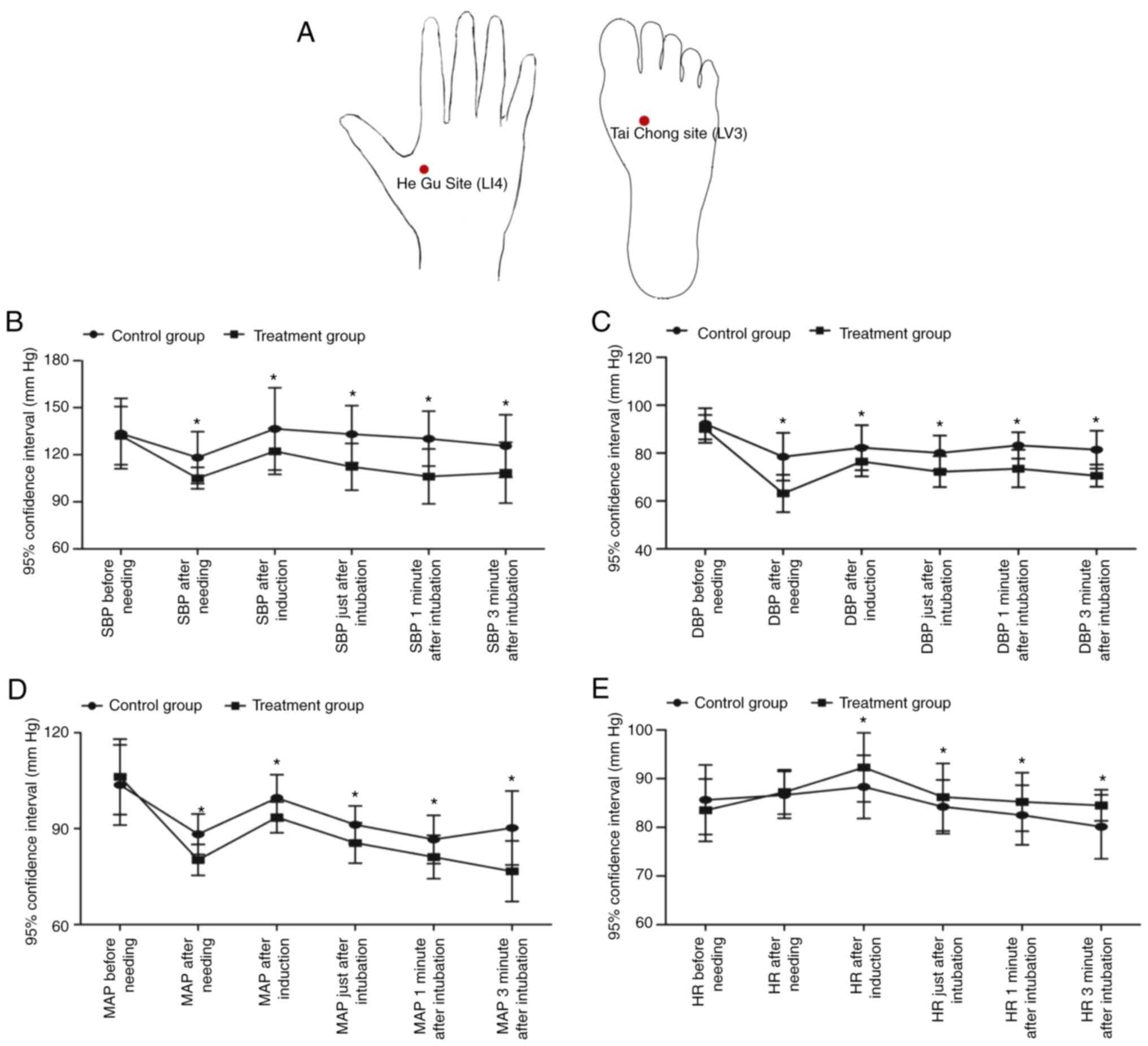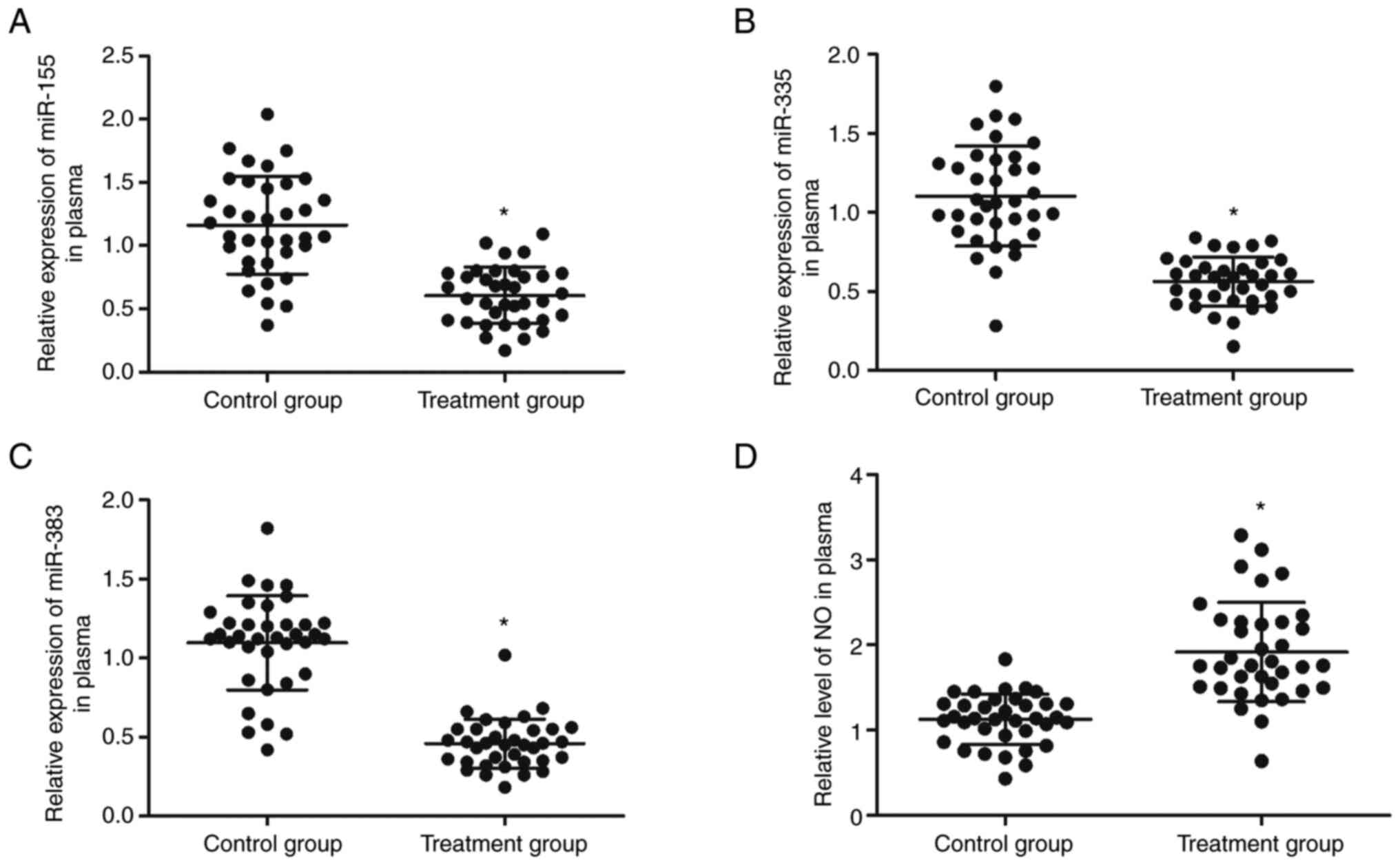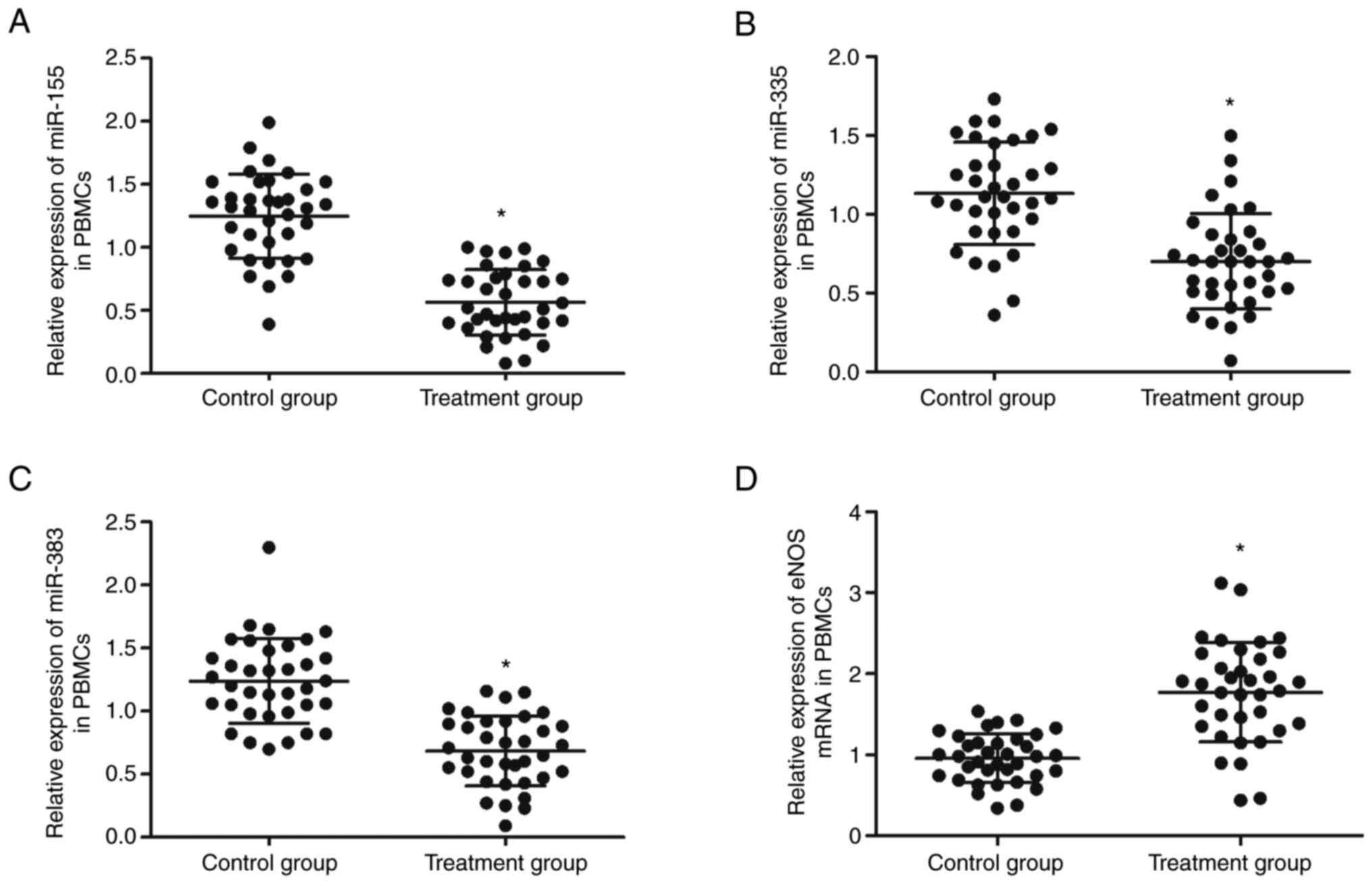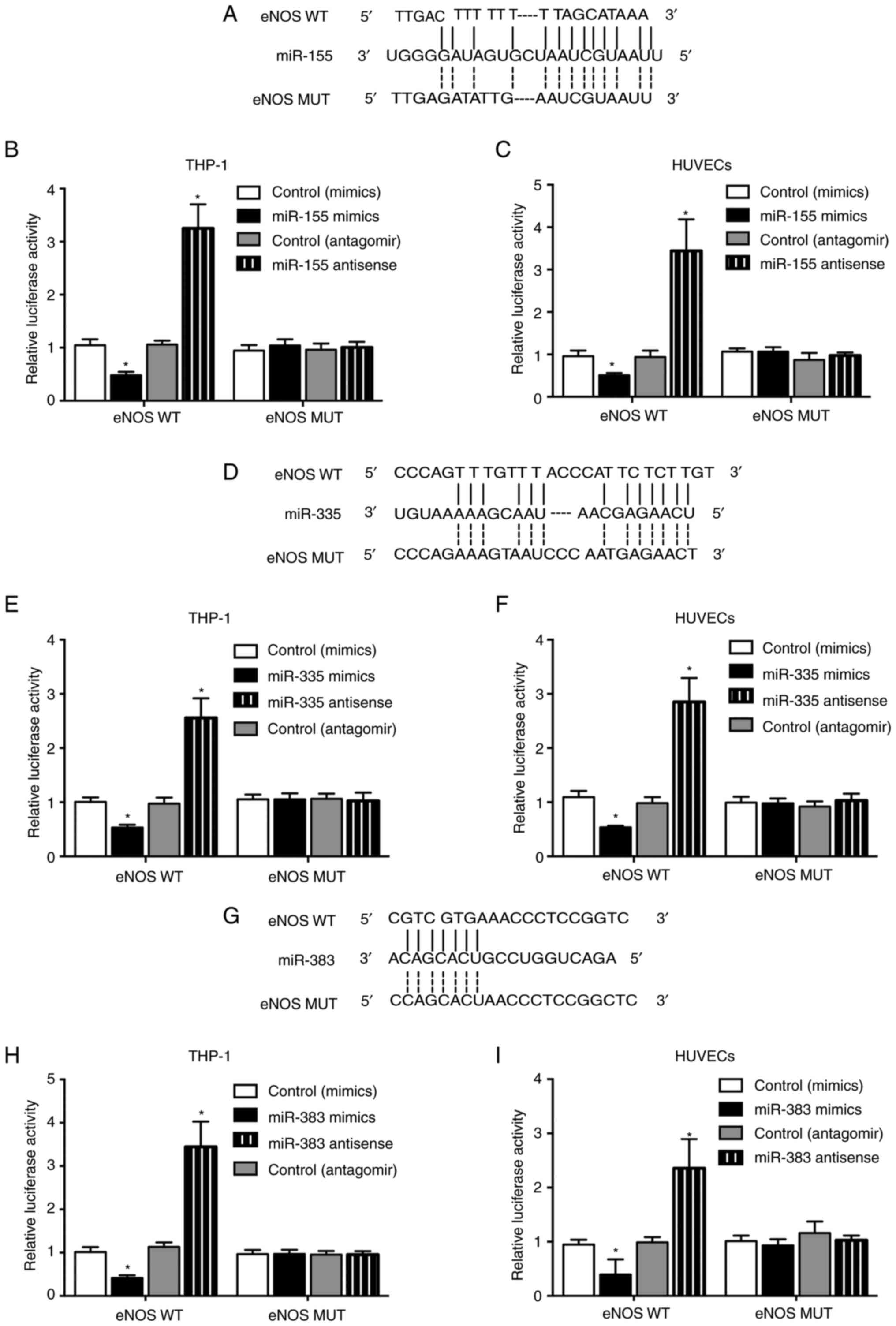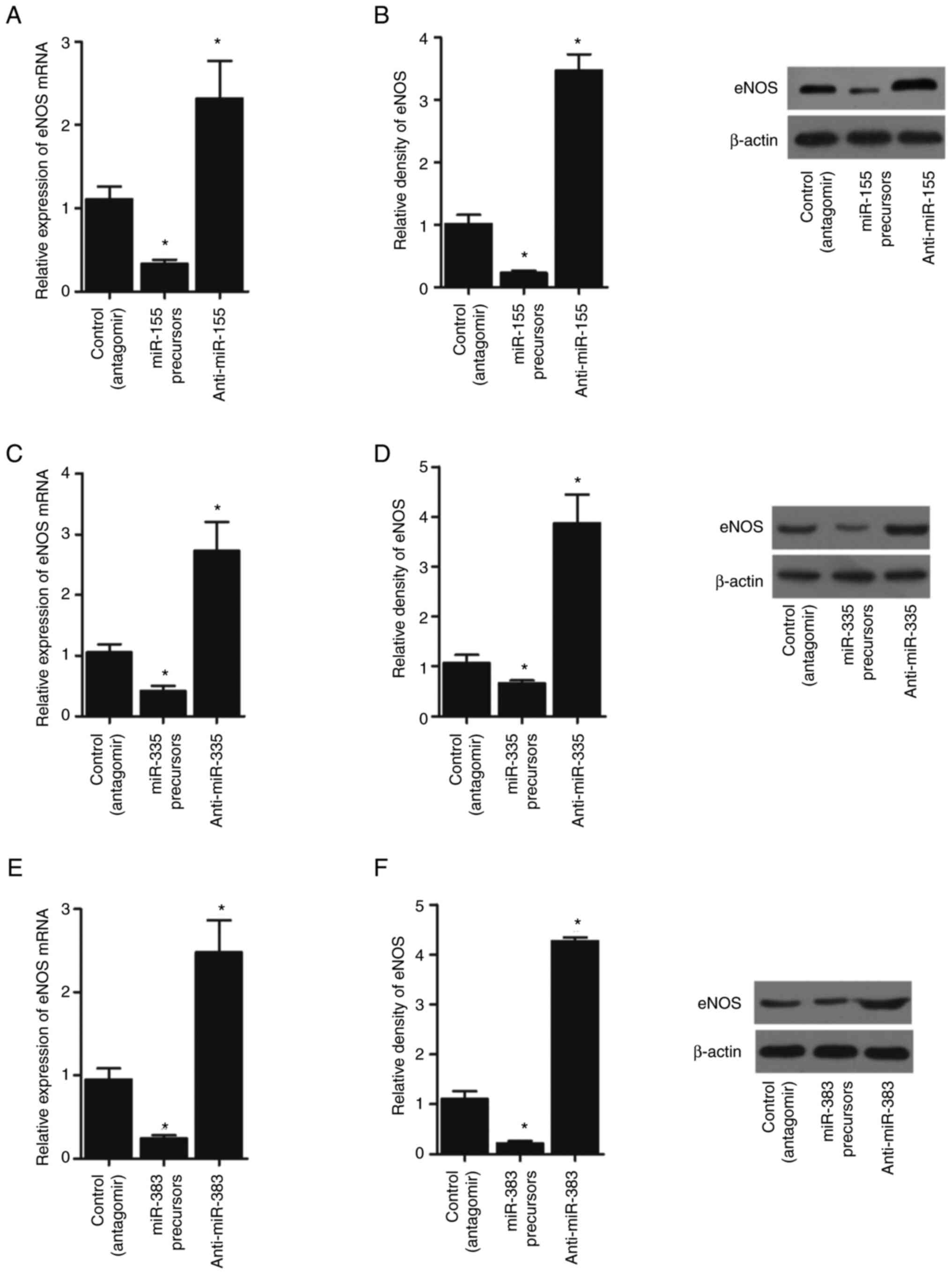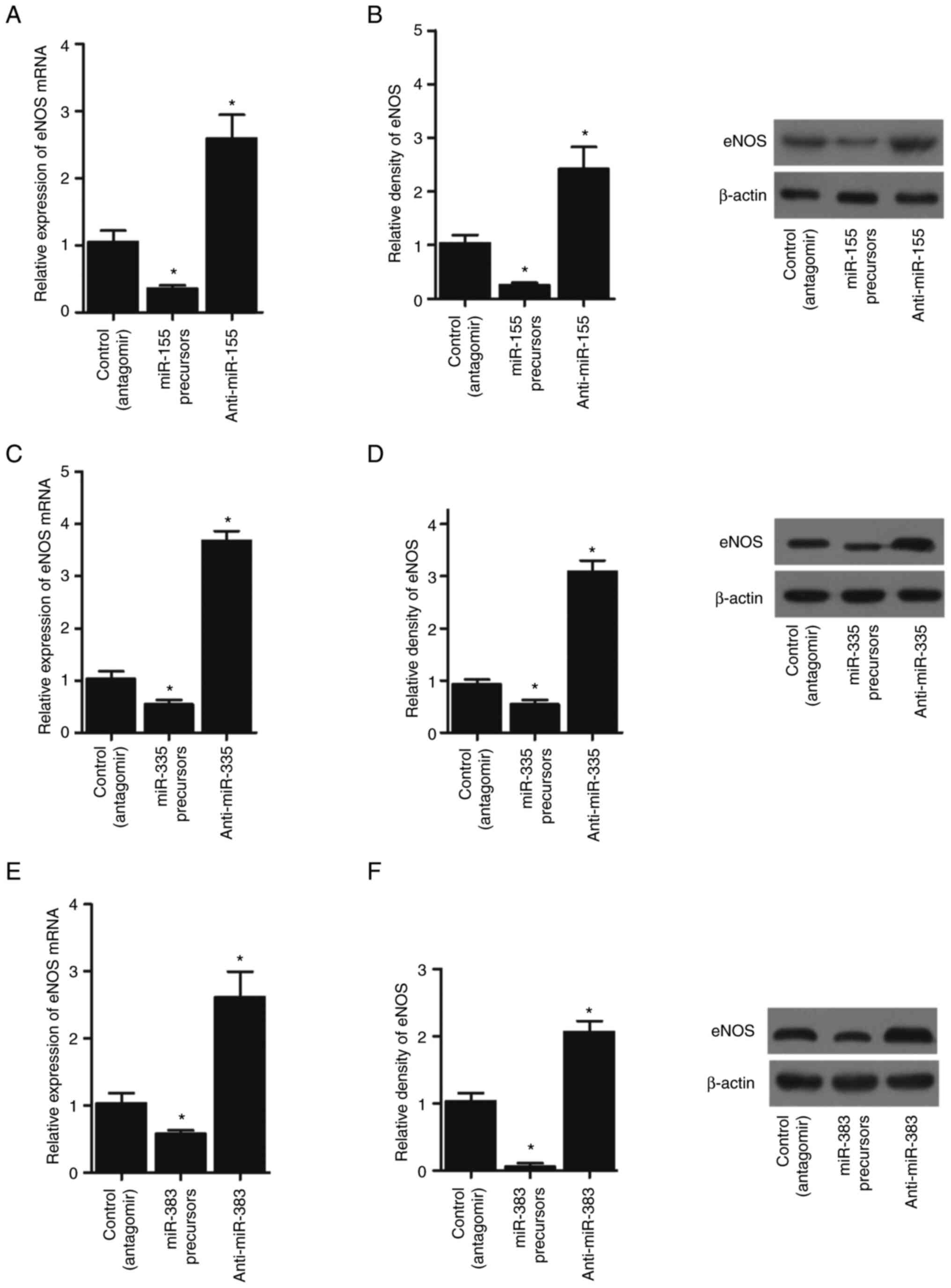|
1
|
Dix P and Howell S: Survey of cancellation
rate of hypertensive patients undergoing anaesthesia and elective
surgery. Br J Anaesth. 86:789–793. 2001. View Article : Google Scholar : PubMed/NCBI
|
|
2
|
Kayhan Z, Aldemir D, Mutlu H and Ogus E:
Which is responsible for the haemodynamic response due to
laryngoscopy and endotracheal intubation? Catecholamines,
vasopressin or angiotensin? Eur J Anaesthesiol. 22:780–785. 2005.
View Article : Google Scholar : PubMed/NCBI
|
|
3
|
Russell WJ, Morris RG, Frewin DB and Drew
SE: Changes in plasma catecholamine concentrations during
endotracheal intubation. Br J Anaesth. 53:837–839. 1981. View Article : Google Scholar : PubMed/NCBI
|
|
4
|
Beissner F, Meissner K, Bar KJ and Napadow
V: The autonomic brain: An activation likelihood estimation
meta-analysis for central processing of autonomic function. J
Neurosci. 33:10503–10511. 2013. View Article : Google Scholar : PubMed/NCBI
|
|
5
|
Mendonca FT, de Queiroz LM, Guimaraes CC
and Xavier AC: Effects of lidocaine and magnesium sulfate in
attenuating hemodynamic response to tracheal intubation:
Single-center, prospective, double-blind, randomized study. Braz J
Anesthesiol. 67:50–56. 2017.PubMed/NCBI
|
|
6
|
Nazir M, Salim B and Khan FA:
Pharmacological agents for reducing the haemodynamic response to
tracheal intubation in paediatric patients: A systematic review.
Anaesth Intensive Care. 44:681–691. 2016. View Article : Google Scholar : PubMed/NCBI
|
|
7
|
Ma R, Liu X, Clark J, Williams GM and Doi
SA: The impact of acupuncture on neurological recovery in spinal
cord injury: A systematic review and meta-analysis. J Neurotrauma.
32:1943–1957. 2015. View Article : Google Scholar : PubMed/NCBI
|
|
8
|
Meng Q, Liu X, Shan Q, Yu P, Mao Z, Zhang
F, Li J and Zhao T: Acupuncture for treatment of secondary
osteoporosis in patients with spinal cord injury: A controlled
study. Acupunct Med. 32:381–386. 2014. View Article : Google Scholar : PubMed/NCBI
|
|
9
|
Jiang DX, Lu ZS, Li GB, Sun SY, Mu X, Lee
P and Chen W: Electroacupuncture improves microcirculation and
neuronal morphology in the spinal cord of a rat model of
intervertebral disc extrusion. Neural Regen Res. 10:237–243. 2015.
View Article : Google Scholar : PubMed/NCBI
|
|
10
|
Lumbers ER, Delforce SJ, Arthurs AL and
Pringle KG: Causes and consequences of the dysregulated maternal
renin-angiotensin system in preeclampsia. Front Endocrinol
(Lausanne). 10:5632019. View Article : Google Scholar : PubMed/NCBI
|
|
11
|
Krichevsky AM: MicroRNA profiling: From
dark matter to white matter, or identifying new players in
neurobiology. ScientificWorldJournal. 7:155–166. 2007. View Article : Google Scholar : PubMed/NCBI
|
|
12
|
Liu J and Wu Y:
Electro-acupuncture-modulated miR-214 prevents neuronal apoptosis
by targeting Bax and inhibits sodium channel Nav1.3 expression in
rats after spinal cord injury. Biomed Pharmacother. 89:1125–1135.
2017. View Article : Google Scholar : PubMed/NCBI
|
|
13
|
Pagidipati NJ and Gaziano TA: Estimating
deaths from cardiovascular disease: A review of global
methodologies of mortality measurement. Circulation. 127:749–756.
2013. View Article : Google Scholar : PubMed/NCBI
|
|
14
|
Fish JE and Marsden PA: Endothelial nitric
oxide synthase: Insight into cell-specific gene regulation in the
vascular endothelium. Cell Mol Life Sci. 63:144–162. 2006.
View Article : Google Scholar : PubMed/NCBI
|
|
15
|
Albrecht EW, Stegeman CA, Heeringa P,
Henning RH and van Goor H: Protective role of endothelial nitric
oxide synthase. J Pathol. 199:8–17. 2003. View Article : Google Scholar : PubMed/NCBI
|
|
16
|
Elms S, Chen F, Wang Y, Qian J, Askari B,
Yu Y, Pandey D, Iddings J, Caldwell RB and Fulton DJ: Insights into
the arginine paradox: Evidence against the importance of
subcellular location of arginase and eNOS. Am J Physiol Heart Circ
Physiol. 305:H651–H666. 2013. View Article : Google Scholar : PubMed/NCBI
|
|
17
|
Connelly L, Madhani M and Hobbs AJ:
Resistance to endotoxic shock in endothelial nitric-oxide synthase
(eNOS) knock-out mice: A pro-inflammatory role for eNOS-derived no
in vivo. J Biol Chem. 280:10040–10046. 2005. View Article : Google Scholar : PubMed/NCBI
|
|
18
|
Huang Z, Hoffmann FW, Fay JD, Hashimoto
AC, Chapagain ML, Kaufusi PH and Hoffmann PR: Stimulation of
unprimed macrophages with immune complexes triggers a low output of
nitric oxide by calcium-dependent neuronal nitric-oxide synthase. J
Biol Chem. 287:4492–4502. 2012. View Article : Google Scholar : PubMed/NCBI
|
|
19
|
Zheng HZ, Jiang W, Zhao XF, Du J, Liu PG,
Chang LD, Li WB, Hu HT and Shi XM: Electroacupuncture induces acute
changes in cerebral cortical miRNA profile, improves cerebral blood
flow and alleviates neurological deficits in a rat model of stroke.
Neural Regen Res. 11:1940–1950. 2016. View Article : Google Scholar : PubMed/NCBI
|
|
20
|
Duan DM, Dong X, Tu Y and Liu P: A
microarray study of chronic unpredictable mild stress rat blood
serum with electro-acupuncture intervention. Neurosci Lett.
627:160–167. 2016. View Article : Google Scholar : PubMed/NCBI
|
|
21
|
Wang JY, Li H, Ma CM, Wang JL, Lai XS and
Zhou SF: MicroRNA profiling response to acupuncture therapy in
spontaneously hypertensive rats. Evid Based Complement Alternat
Med. 2015:2043672015.PubMed/NCBI
|
|
22
|
Rahimi M, Farhanchi A, Taheri M and Samadi
S: The effects of acupuncture on hemodynamic changes during
endotracheal intubation for general anesthesia. Med Acupunct.
31:123–129. 2019. View Article : Google Scholar : PubMed/NCBI
|
|
23
|
Livak KJ and Schmittgen TD: Analysis of
relative gene expression data using real-time quantitative PCR and
the 2(−Delta Delta C(T)) Method. Methods. 25:402–408. 2001.
View Article : Google Scholar : PubMed/NCBI
|
|
24
|
Dashti M, Amini S, Azarfarin R, Totonchi Z
and Hatami M: Hemodynamic changes following endotracheal intubation
with glidescope(®) video-laryngoscope in patients with
untreated hypertension. Res Cardiovasc Med. 3:e175982014.PubMed/NCBI
|
|
25
|
Amini S and Shakib M: Hemodynamic changes
following endotracheal intubation in patients undergoing cesarean
section with general anesthesia: Application of glidescope(R)
videolaryngoscope versus direct laryngoscope. Anesth Pain Med.
5:e218362015. View Article : Google Scholar : PubMed/NCBI
|
|
26
|
Stener-Victorin E, Kobayashi R and
Kurosawa M: Ovarian blood flow responses to electro-acupuncture
stimulation at different frequencies and intensities in
anaesthetized rats. Auton Neurosci. 108:50–56. 2003. View Article : Google Scholar : PubMed/NCBI
|
|
27
|
Noguchi E, Ohsawa H, Kobayashi S, Shimura
M, Uchida S and Sato Y: The effect of electro-acupuncture
stimulation on the muscle blood flow of the hindlimb in
anesthetized rats. J Auton Nerv Syst. 75:78–86. 1999. View Article : Google Scholar : PubMed/NCBI
|
|
28
|
Ohsawa H, Yamaguchi S, Ishimaru H, Shimura
M and Sato Y: Neural mechanism of pupillary dilation elicited by
electro-acupuncture stimulation in anesthetized rats. J Auton Nerv
Syst. 64:101–106. 1997. View Article : Google Scholar : PubMed/NCBI
|
|
29
|
Dundee JW and Ghaly G: Local anesthesia
blocks the antiemetic action of P6 acupuncture. Clin Pharmacol
Ther. 50:78–80. 1991. View Article : Google Scholar : PubMed/NCBI
|
|
30
|
Morioka N, Akca O, Doufas AG, Chernyak G
and Sessler DI: Electro-acupuncture at the Zusanli, Yanglingquan,
and Kunlun points does not reduce anesthetic requirement. Anesth
Analg. 95:98–102. 2002. View Article : Google Scholar : PubMed/NCBI
|
|
31
|
Kvorning N, Christiansson C, Beskow A,
Bratt O and Akeson J: Acupuncture fails to reduce but increases
anaesthetic gas required to prevent movement in response to
surgical incision. Acta Anaesthesiol Scand. 47:818–822. 2003.
View Article : Google Scholar : PubMed/NCBI
|
|
32
|
Saleh RH: Efficacy of laser acupuncture in
attenuating hemodynamic response to orotracheal intubation and
postoperative nausea and vomiting in children undergoing strabismus
surgery. Egypt J Anaesth. 30:411–416. 2019. View Article : Google Scholar
|
|
33
|
Palmer RM, Ashton DS and Moncada S:
Vascular endothelial cells synthesize nitric oxide from L-arginine.
Nature. 333:664–666. 1988. View
Article : Google Scholar : PubMed/NCBI
|
|
34
|
Woodward JJ, Nejatyjahromy Y, Britt RD and
Marletta MA: Pterin-centered radical as a mechanistic probe of the
second step of nitric oxide synthase. J Am Chem Soc. 132:5105–5113.
2010. View Article : Google Scholar : PubMed/NCBI
|
|
35
|
Devlin J, Palmer RM, Gonde CE, O'Grady J,
Heaton N, Tan KC, Martin JF, Moncada S and Williams R: Nitric oxide
generation. A predictive parameter of acute allograft rejection.
Transplantation. 58:592–595. 1994. View Article : Google Scholar : PubMed/NCBI
|
|
36
|
Casanello P, Krause B, Torres E, Gallardo
V, Gonzalez M, Prieto C, Escudero C, Farias M and Sobrevia L:
Reduced l-arginine transport and nitric oxide synthesis in human
umbilical vein endothelial cells from intrauterine growth
restriction pregnancies is not further altered by hypoxia.
Placenta. 30:625–633. 2009. View Article : Google Scholar : PubMed/NCBI
|
|
37
|
Fulton D, Gratton JP, McCabe TJ, Fontana
J, Fujio Y, Walsh K, Franke TF, Papapetropoulos A and Sessa WC:
Regulation of endothelium-derived nitric oxide production by the
protein kinase Akt. Nature. 399:597–601. 1999. View Article : Google Scholar : PubMed/NCBI
|
|
38
|
Wu KK: Regulation of endothelial nitric
oxide synthase activity and gene expression. Ann N Y Acad Sci.
962:122–130. 2002. View Article : Google Scholar : PubMed/NCBI
|
|
39
|
Fu QN, Shi GX, Li QQ, He T, Liu BZ, Sun
SF, Wang J, Tan C, Yang BF and Liu CZ: Acupuncture at local and
distal points for chronic shoulder pain: Study protocol for a
randomized controlled trial. Trials. 15:1302014. View Article : Google Scholar : PubMed/NCBI
|
|
40
|
Lathia AT, Jung SM and Chen LX: Efficacy
of acupuncture as a treatment for chronic shoulder pain. J Altern
Complement Med. 15:613–618. 2009. View Article : Google Scholar : PubMed/NCBI
|















